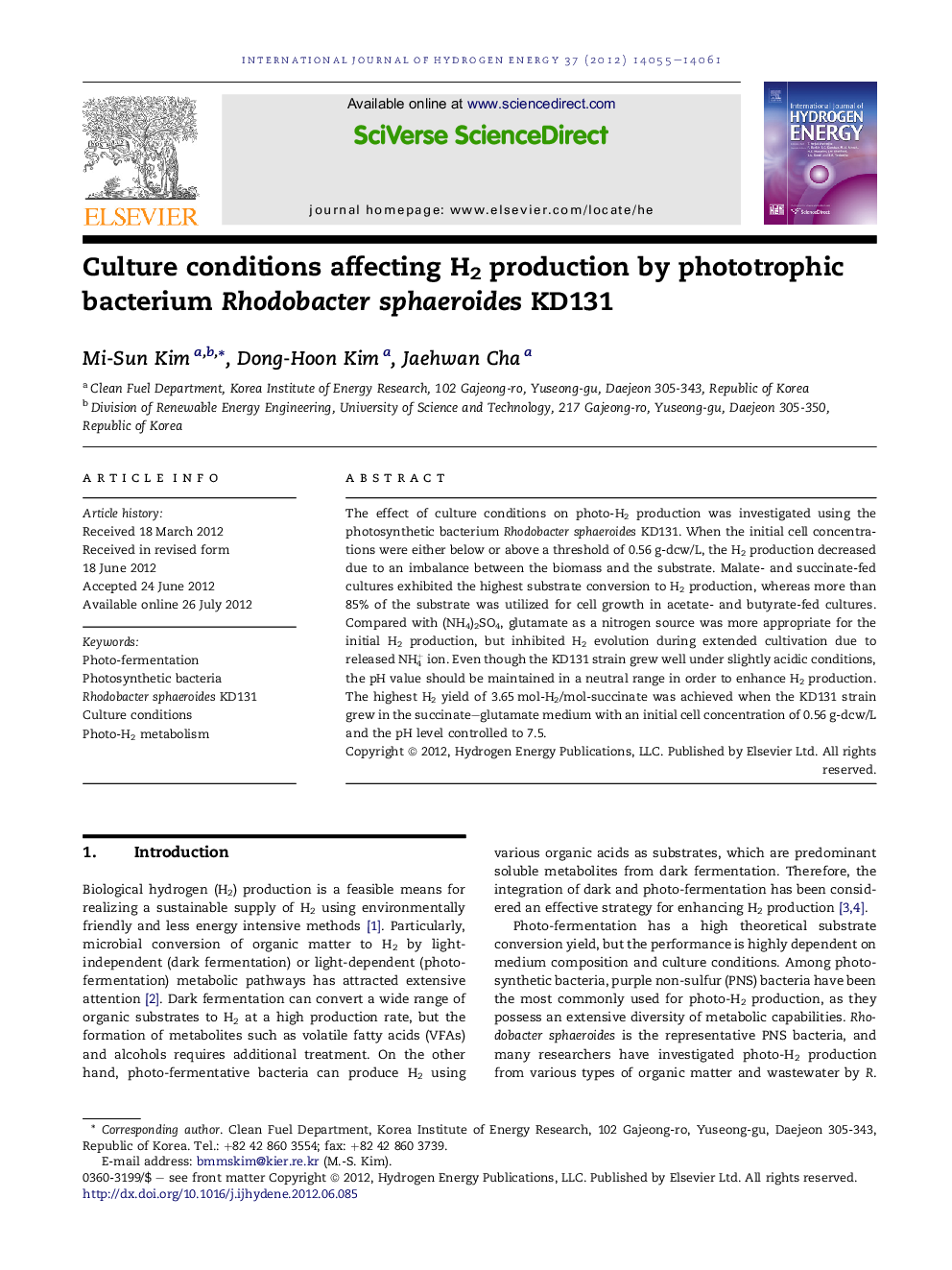| Article ID | Journal | Published Year | Pages | File Type |
|---|---|---|---|---|
| 1274748 | International Journal of Hydrogen Energy | 2012 | 7 Pages |
The effect of culture conditions on photo-H2 production was investigated using the photosynthetic bacterium Rhodobacter sphaeroides KD131. When the initial cell concentrations were either below or above a threshold of 0.56 g-dcw/L, the H2 production decreased due to an imbalance between the biomass and the substrate. Malate- and succinate-fed cultures exhibited the highest substrate conversion to H2 production, whereas more than 85% of the substrate was utilized for cell growth in acetate- and butyrate-fed cultures. Compared with (NH4)2SO4, glutamate as a nitrogen source was more appropriate for the initial H2 production, but inhibited H2 evolution during extended cultivation due to released NH4+ ion. Even though the KD131 strain grew well under slightly acidic conditions, the pH value should be maintained in a neutral range in order to enhance H2 production. The highest H2 yield of 3.65 mol-H2/mol-succinate was achieved when the KD131 strain grew in the succinate–glutamate medium with an initial cell concentration of 0.56 g-dcw/L and the pH level controlled to 7.5.
► The effect of initial cell concentrations was evaluated using electron balance. ► Dicarboxylic acids as the carbon source were preferred for H2 production. ► H2 evolution was repressed over time by NH4+ ion released from glutamate. ► The KD131 grew well under acid conditions but produced more H2 at pH 7. ► The highest H2 yield of 3.65 mol-H2/mol-succinate was achieved.
